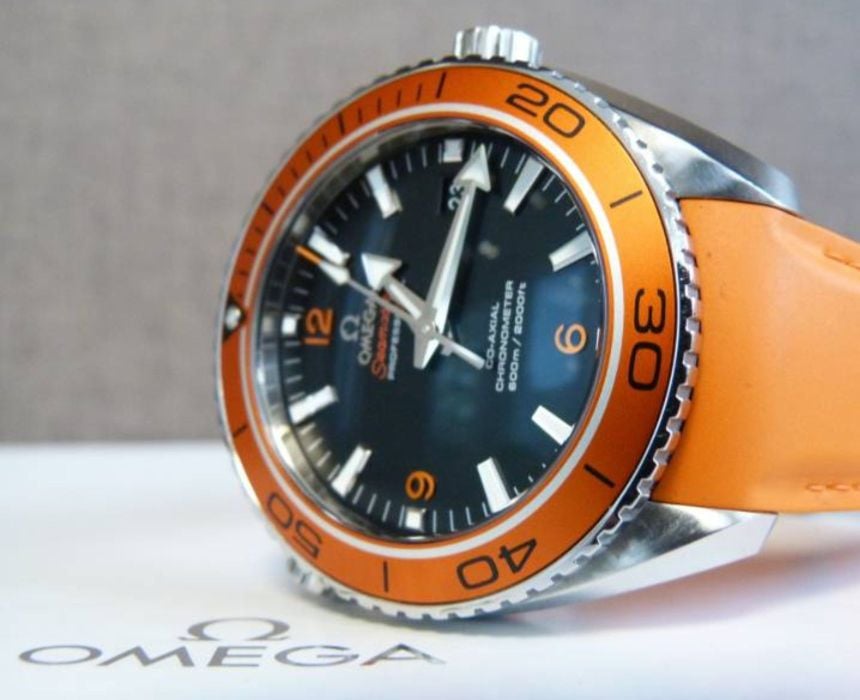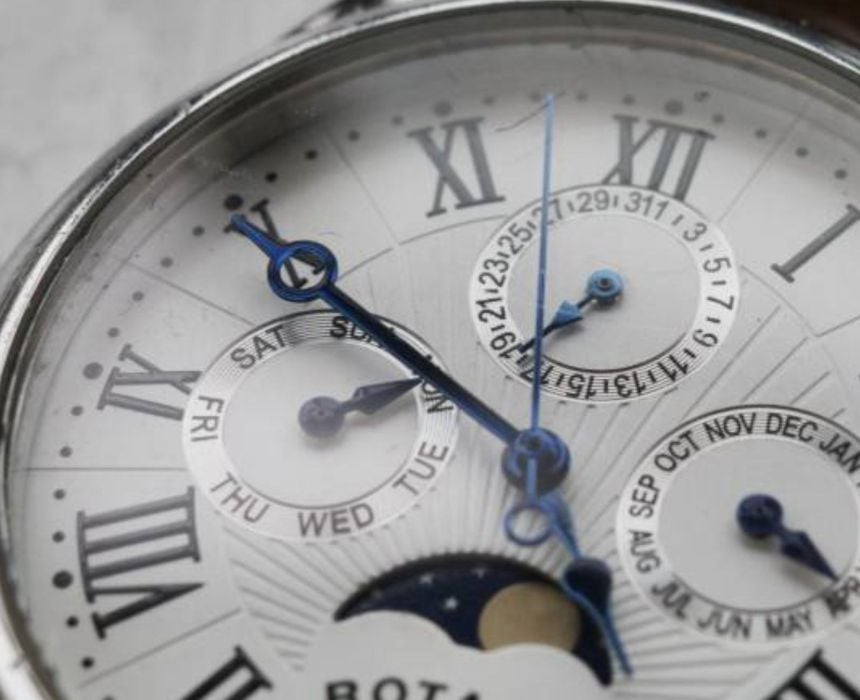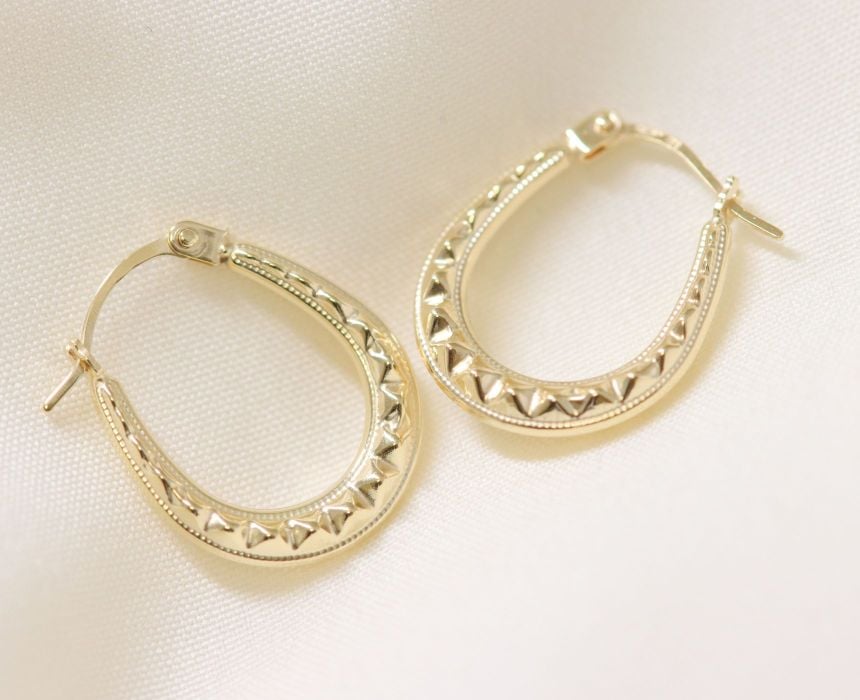- ‹Home
- ‹
- /
- Jewellery & Watch Guides
- /
- Watch Care and Cleaning Guide

How to clean and care for your watch
A good quality watch can last you for years, even if you've bought it pre-owned. However, watches need to be cared for to ensure they last as long as they should. One main point of care is regular cleaning. Whether your watch has started looking a little worn, or if you have a new watch that you want to care for, it's time to make it sparkle! However, many of us don't know how to clean a watch, so we avoid doing so. This is hardly surprising: watches have many parts which makes the cleaning process seem overwhelming, and it can be tricky to find the best cleaning products to use. But failing to clean your watch regularly will damage it over time.AVAILABLE WATCHES

Why do you need to clean your watch
Watches can become incredibly dirty over time, especially if they're worn every day. Loose hairs, sweat, oils from the skin, and dust can all get into the watch to make it grubby and unsanitary. That's why watches can start to smell pungent if they haven’t been correctly washed in a while. The bacteria found on watches can even be causing you harm, as one study found E. coli present on several of the watches they analysed (Source: WPTV).
As well as being unhygienic, leaving your watch dirty can seriously damage it. Leather straps can become cracked, links can become worn down, and metal elements can become rusty. So, to keep it in the best condition, you must clean your watch regularly.
How often should you clean your watch?
The chances are that you should be cleaning your watch a lot more often than you think. In short, it depends on how often you wear it. For a wristwatch that you only wear on special occasions, cleaning it two or three times a year should be enough. Even if you haven’t worn it much, it's still a good idea to give it a clean, as dust can accumulate when it's kept in storage.
For watches that are worn pretty often but not every day, aim to clean them around once a month. And for watches you wear every day or ones that seem to get dirty quickly, aim to do a weekly clean.
Now that you know the why and when, it's time to learn how to clean a watch.

How to clean a watch
The process of cleaning a wristwatch is split up into two parts: the strap, and the watch itself. Although cleaning a watch can seem a bit fiddly at first, it's actually a lot easier than it looks. For the watch face itself, it's mainly just a simple wipe that is needed. Though cleaning the movement of the watch and other fiddly parts surrounding the face can be more complicated. And cleaning a watch strap will depend on the material of the strap.
Cleaning the actual timepiece of a wristwatch will not only keep it looking great but will ensure you can always see the time. We'll go through how to clean this part of the watch, which is pretty simple and easy to do. The only part we would not recommend cleaning yourself is the watch movement.
Before you start the watch cleaning process, you should gather the following:
- A microfibre cloth
- Antibacterial wet wipes
- Cotton swabs
- Toothpicks
Once you have all the above gathered, you can start cleaning the watch case and parts:
How to clean a watch dial
Cleaning a watch dial, otherwise known as a watch face, is quick and easy. Start by gently wiping the face and back of the watch with a dry microfibre cloth, to remove dust and big bits of dirt. After this, simply use an antibacterial wet wipe to clean the face. Not only will this leave the watch looking fresh, but the alcohol in the wipe will kill off any bacteria that are still lingering on it.
How to clean a watch bezel
The bezel is the ring found on the outside of the watch. Some are there as simply decoration, while others can be used as stopwatches. Cleaning the bezel is as simple as cleaning the watch dial: all you need to do is use a clean, damp cloth, a dampened toothbrush, or an anti-bacterial wipe to remove the dirt. If you can't catch all the dirt, gently use a cotton swab to reach the difficult areas.
How to clean the watch crown and lugs
Cleaning the watch crown and lugs can be a little bit fiddlier, as they're difficult to get into. The crown is the knob on the side of the watch that you use to adjust the time, and the lugs connect the watch to the strap. To clean this, simply wipe the pieces over with an antibacterial wipe, and use a cotton swab for the stubborn bits of dirt that just won't lift.
If there's still dirt that doesn't seem to budge, you can use a toothpick to ease it out. But never use it directly on the watch, as this can damage it. Instead, cut off the sharp end of the toothpick, and wrap the remainder in an antibacterial wipe before you start cleaning. You should only use a toothpick if absolutely necessary, and be very careful when doing so.

How to clean a watch movement
The watch movement is one of the most important parts of your timepiece. To put it simply, movement refers to the many different parts inside the watch that work together to make it accurately tell the time. Since it's such an important part of the watch, keeping it clean is vital. Not only does it make it look much better, but dirt can wear down the inner workings of the watch and make it less reliable — and eventually stop it from working altogether.
To clean a watch movement, you must disassemble every part of it. And since there are so many parts, reassembling it is impossible without a lot of specialist knowledge. Therefore, you should never attempt to clean the watch movement by yourself, instead, take it to a trusted and reliable watch specialist, who will do the work for you.
Fortunately, you don't need to clean the movement as often as the rest of the watch. Unless you get a lot of dirt in the movement, or it starts to become less reliable, you only need to get it cleaned every three to five years.
Finishing the clean
After cleaning every part of the watch (excluding the movement), wipe it over with a microfibre cloth, and make sure it is thoroughly dry before wearing it or putting it away. This is important, as watches can become tarnished over time if left wet or damp for long periods.

How to clean a watch strap
The strap is usually the dirtiest part of the watch, so it's important to know how to clean it thoroughly. However, it's not quite as simple as cleaning the watch itself, as there are many different types of straps. Here, we'll go through the cleaning processes for the most popular types of watch straps.
How to clean a leather watch strap
Start cleaning your leather strap by wiping it down with a dry cloth to remove any surface debris. Make sure to use a microfibre cloth to keep the strap free of scratches. Next, use an antibacterial wipe to remove any unhygienic bacteria.
To give additional care to a leather watch strap, add a few drops of leather conditioner to a dry cloth, rub it in, and allow it to dry. This will keep the material soft and prevent it from cracking. Make sure to use a leather conditioner specifically for watches, as this conditioner is best for being in close contact with your skin.
It's important to regularly clean and cares for a leather watch strap, as it easily absorbs dirt and traps odour. Plus, leather is a sensitive material, that can be affected by both liquids and high temperatures over time.
People who wear their watch with a leather strap every day should clean it as often as once a week to prevent sweat and dirt from being absorbed by the strap. But use the leather conditioner sparingly, as overuse can wear the strap out over time. Aim to use conditioner around two or three times a year at most.
How to clean a stainless steel watch bracelet
To clean a stainless steel watch bracelet, start by wiping it down with a dry microfibre cloth to remove any surface dirt. Next, use a damp cloth or toothbrush to gently scrub the strap. Pay close attention to the gaps between the links, as this is where a lot of dirt gets trapped.
If you're struggling to free up dirt from the links with just a cloth, use a cotton bud or your fingertips. Always be careful to avoid scratching the bracelet when removing big chunks of dirt.
Stainless steel bracelets are generally more durable than leather ones, but it's still just as important to keep them clean. Dirt and debris dull the bracelet over time, so you should clean it regularly to keep your timepiece sparkling.

How to clean a metal watch bracelet
Cleaning a metal watch bracelet is similar to cleaning a stainless steel watch bracelet. It's mainly a case of simply wiping the strap clean. However, there are additional considerations that depend on the metal that the strap is made from, especially if you have a gold or silver watch strap.
To clean a gold watch, you should always use a cloth instead of a toothbrush. Even a toothbrush with the softest bristles can scratch this precious metal. However, you can still use some of your dental products to clean gold, as toothpaste does a great job at removing tarnishing. Simply add a tiny bit of toothpaste onto a clean cloth, use it to gently rub the band, and clean it off with a damp cloth. Make sure to avoid using whitening or gel-based toothpaste, as these are more abrasive.
To clean a silver watch, avoid using this toothpaste trick as it can cause serious damage. Instead, clean it the same way as you would a stainless steel watch, and use a specific silver jewellery cleaning solution to give it an extra shine.
How to clean a rubber or silicone watch strap
To clean rubber or silicone watch straps, regularly wipe them over with an antibacterial wipe to keep them clean. If there are any stubborn stains or grime that won't come off easily, lightly sprinkle baking soda onto the spot and use a toothbrush to gently scrub until the mark is gone.
Rubber and silicone watch straps are a great option for people with active lifestyles: they're comfortable, durable, and very easy to keep clean. But they still need to be cleaned regularly to keep them in the best condition.

How to care for your watch
Knowing how to clean a watch is important, but the timepiece will only stay in top condition if you look after it in other ways too. For instance, it's important to take your watch off when doing the washing up, you should also keep your watch in the box it came in, if possible. Another important part of watch care is being aware of what you put on your skin and how these chemicals can affect your watch.
Here are some additional tips for keeping care of your watch, to ensure it lasts you for years:
Wearing your watch
As much as you love your watch, it shouldn't be on your wrist every second of the day. Make sure to set your wristwatch aside when you're doing the following activities:
- Washing up: This may sound like an obvious one, but many people assume it's okay to do the washing up whilst wearing a water-resistant watch. However, this is a bad idea, as hot water can damage the watch movement, and condensation may develop beneath the dial.
- Sunbathing: Lots of exposure to direct sunlight can fade both the watch dial and the colour of the strap.
- Sleeping: Wearing your watch 24 hours a day will make it dirty a lot quicker, so make sure to take it off before bed.
When taking your watch off, make sure to handle it with care, as dropping it can cause serious damage. Even if it looks fine on the outside, sudden impact can damage the watch’s movement. Be slow and steady when taking your watch off, and never leave it on the edge of a high surface.
Storing your watch
Your watch can become damaged even when it isn't being worn! Chips and scratches can damage the watch if it isn't stored correctly. Plus, dust and moisture can get inside the watch movement, which will slow it down, and potentially break it completely.
To care for your watch properly, try to store it in the box it came in. But don't worry if you don't have this anymore, as you can easily buy another storage box. If you have a collection of timepieces, get a storage box that holds multiple watches — just make sure to keep them apart by at least an inch to prevent scratching.
Make sure to keep the box in a room temperature space, as extreme heat and cold can damage the movement. To keep the storage space completely dry, put a silica gel pouch in the box to absorb the moisture. And remember, no matter how well you store your watch, dust can still build up over time. Watches kept in storage should be cleaned at least a couple of times a year, even if they haven't been worn recently.

Lotions and fragrances on your watch
To keep your watch in the best condition, be careful about what you put on your wrist before wearing it. Perfumes, colognes, and lotions can damage both the straps and the watch itself. The oils and chemicals found in lotions and fragrances can tarnish metal straps and stain and discolour leather straps. Not to mention how damaging moisture can be to watch movement!
To keep your timepiece looking sharp and in good working order, allow any lotions and fragrances to dry on the skin before wearing your watch. If you want to top your fragrance up throughout the day, spritz your neck or the inside of your elbow rather than your wrist.
Servicing your watch
It's important to take the time to care for your watch, but there's only so much you can do yourself. To keep it in top-quality condition, make sure to get your watch serviced by a professional at least once every five years.
Professional servicing involves cleaning the timepiece thoroughly, oiling it if needed, buffing out dents and scratches, and testing that every part is in good working order. While it can be pricey, it will save you a lot of money in the long run. Having your watch serviced regularly will help the longevity of the timepiece, and keep it looking good. This is important not just for preowned watches (which can last for years if cared for properly)and vintage watches, but new watches should be regularly serviced too.

How to care for your watch type
The general watch care tips above are beneficial for all timepieces. But watches can have additional requirements depending on the type of movement inside. What's right for one watch isn't necessarily right for another, so you must know what type of watch movement you have in order to care for it properly.
How to care for a quartz watch
As well as the general watch maintenance discussed above, remember to replace the battery in a quartz watch regularly. If batteries aren't replaced often enough, they'll leak and damage the inner mechanisms, potentially beyond repair. You'll likely do this anyway, as watch batteries tend not to last any longer than two years.
If your watch shows signs of slowing down less than a year after replacing the battery, take it in to be serviced, as this can be a sign of damage caused by battery leakage.
Quartz watches are extra sensitive to moisture, as condensation can damage the circuit. Make sure to store this type of watch in a dry, room temperature place, with silica gel pouches inside the storage box. When storing the watch for a long time, make sure to remove the battery, as it is likely to leak if it becomes inactive.
How to care for a manual watch
Manual watches are incredibly complex and intricate — they can contain up to 300 tiny parts! Because these watches are so detailed, they must be stored safely and securely. If one piece is out of place, it impacts the whole watch.
Manual watches are powered by being wound by hand. Don't wind the watch if the time is between 9 p.m. and 2 a.m, as this is the time that the date changes on the watch. If you do it between these times, you can break the mechanism. After winding a manual watch, it tends to last for up to 40 hours. You should get into the habit of winding it every day to keep it as accurate as possible.
Always take your watch off to wind it, as winding it while on your wrist can put pressure on the stem, and it may break if done often enough. Wind the crown until you feel a lot of resistance — this should be somewhere between 30 and 40 turns.

How to care for an automatic watch
Although automatic watches require winding far less than manual ones, they still need to be wound on the odd occasion. For example, if the watch has been in storage for a while, the energy stored in the mainspring will run out, so it needs to be wound before using it again. Winding an automatic watch is exactly the same as winding a manual one.
But just because it can be wound manually doesn't mean you should do it often, as this will make the parts lose lubrication. Try not to leave the watch unused for long periods, as it works better if wound kinetically. Wear this type of watch at least once a week to keep it in good condition.
When to go to a specialist
Even if you know how to clean a watch and care for it well, things can still go wrong. If something feels off with your watch, don't try to fix the problem yourself, as this can cause even more damage. Take the watch to a specialist as soon as you notice the issue. Even if it doesn't feel like a big deal, it's best to get it checked out sooner rather than later, as leaving it can make the problem worse.
It's also worth checking the warranty on your watch if you purchased it relatively recently. At Ramsdens, we offer a 12 month standard warranty on all watches, to give you peace of mind when making your purchase.
Cleaning and caring for your watch
Knowing how to clean your watch is a big part of caring for your timepiece. Although it may seem daunting, cleaning a watch is easier than most people think! And once you get into the habit of it, your watch will be looking good and keep accurate.
Other than cleaning, it's important to store your watch properly when you're not wearing it. And you should have it serviced every few years to keep it in the best condition.
Caring for and cleaning your watch regularly will not only keep it looking good but will ensure your watch lasts.This is especially important for luxury pieces such as Rolex watches or an Omega watch. A well cared for watch should last for years, even if you buy a pre-owned watch.
For more information on watches, check out our Jewellery and watch guides.
While all efforts have been made to ensure this information is correct, Ramsdens cannot be held liable for any accidental damage that occurs as a result of following this advice. When in doubt, always take your timepiece to a professional.
WATCH RECOMMENDATIONS










